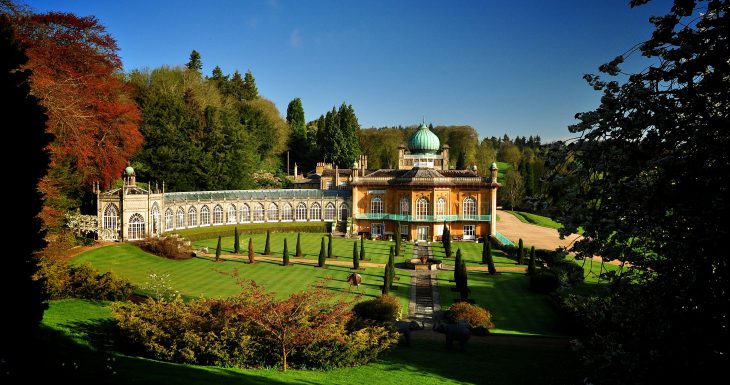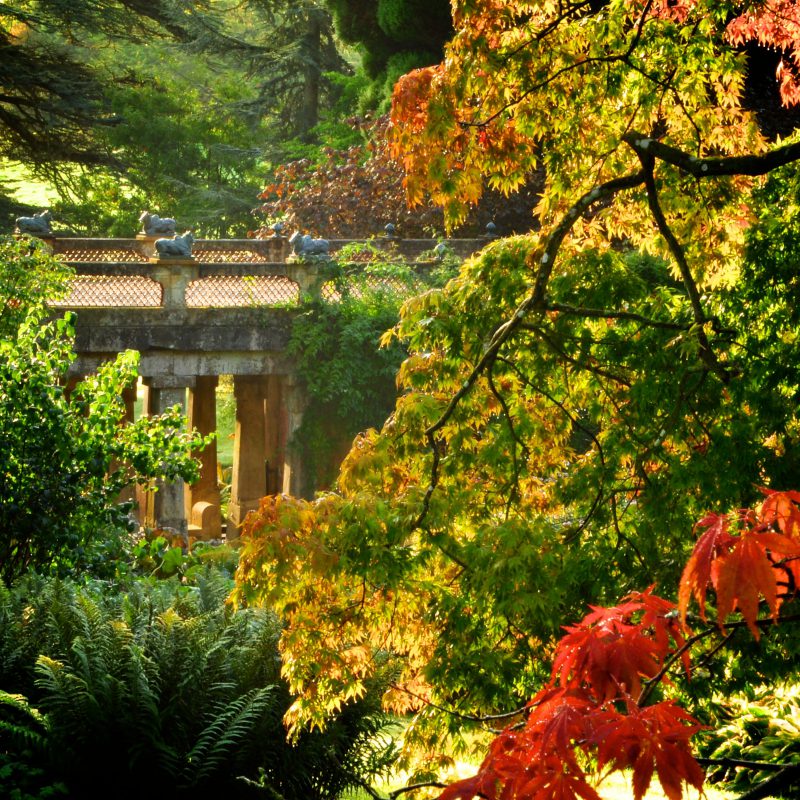Sezincote
One of England's most exotic country houses.
Moreton-in-Marsh, Gloucestershire, GL56 9AW

- Accessible toilets
- Accessible parking
- Access statement available
- Guide dogs welcome
The house was the whim of Colonel John Cockerell, grandson of the diarist Samuel Pepys, who returned to England having amassed a fortune in the East India Company. John died in 1798, three years after his return, and the estate passed to his youngest brother Charles, who had also worked for the company. He commissioned his brother Samuel, an architect, to design and build an Indian house in the Mogul style of Rajasthan, complete with minarets, peacock-tail windows, jali-work railings and pavilions.
Once completed, Sezincote dazzled all who came. When the Prince Regent visited in 1807, an event commemorated in a Daniell painting owned by the family, he was so impressed that he went on to change his plans for the Royal Pavilion in Brighton. Designed by John Nash, it echoed the exotic Indian style he’d admired at Sezincote.
The poet John Betjeman, who used to visit as a student at Oxford, captured Sezincote’s charm in Summoned by Bells:
- Accessible toilets
- Accessible parking
- Access statement available
- Guide dogs welcome
John Betjeman - 'Summoned by Bells'
Down the drive, Under the early yellow leaves of oaks… the bridge, the waterfall, the Temple Pool and there they burst on us, the onion domes.

He also alludes to the exotic “home of the oaks”, for Sezincote (pronounced Seezincote) is derived from Cheisnecote, from chêne, French for oak, and cot for dwelling.
S.P.Cockerell was greatly assisted by the artist Thomas Daniell in conceiving the design for Sezincote. Daniell had spent ten years in India with his nephew William, making aquatints, watercolours and oils of Indian buildings and landscapes using a ‘camera obscura’ and thus had an unparalleled knowledge of Indian architecture. The interior is purely classical – Greek Revival – and no attempt was ever made to Indianise it. Similarly the garden adjacent to the house and thus an extension of its domestic space, originally did not share in the Indian character of the water garden.
